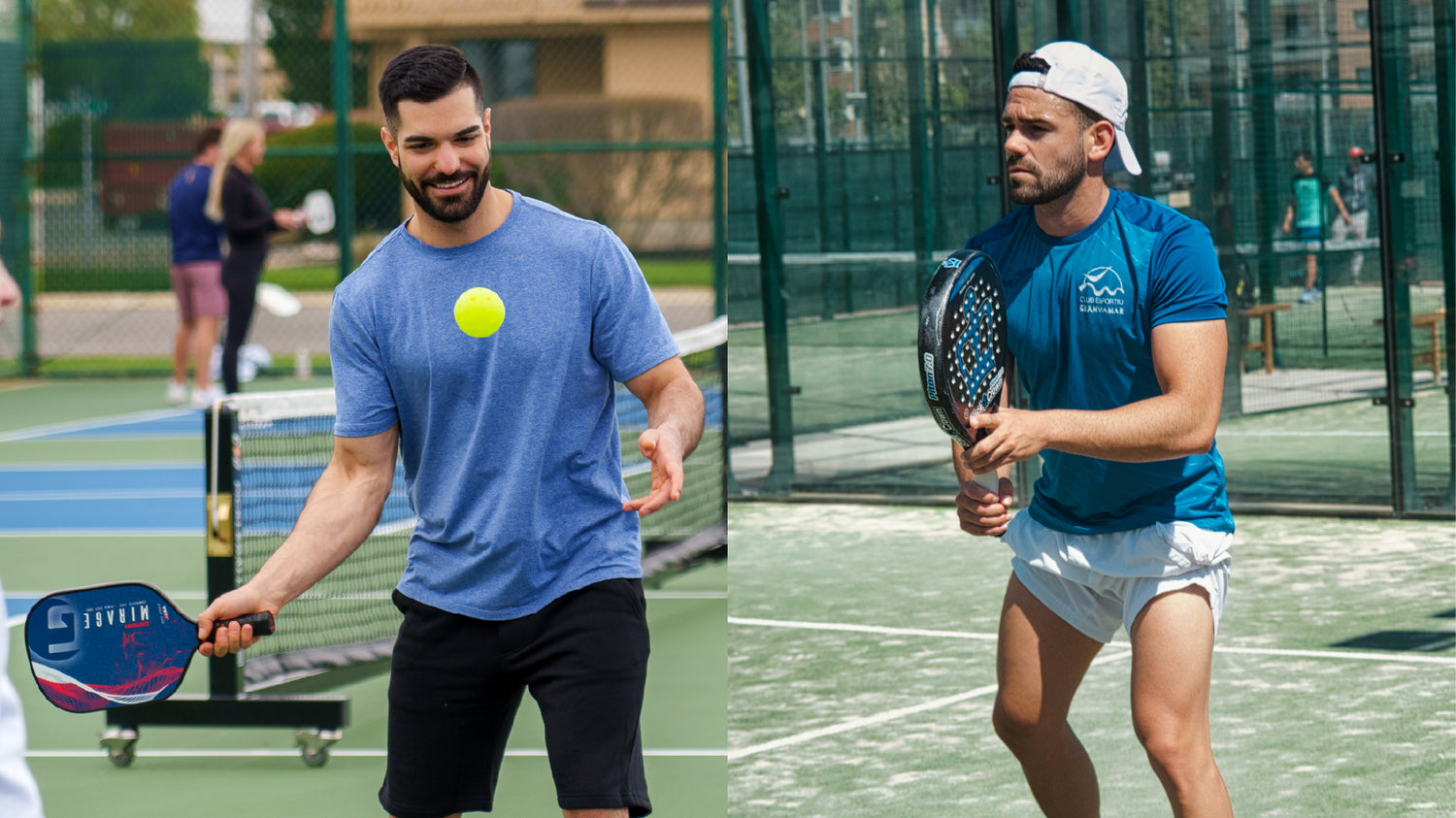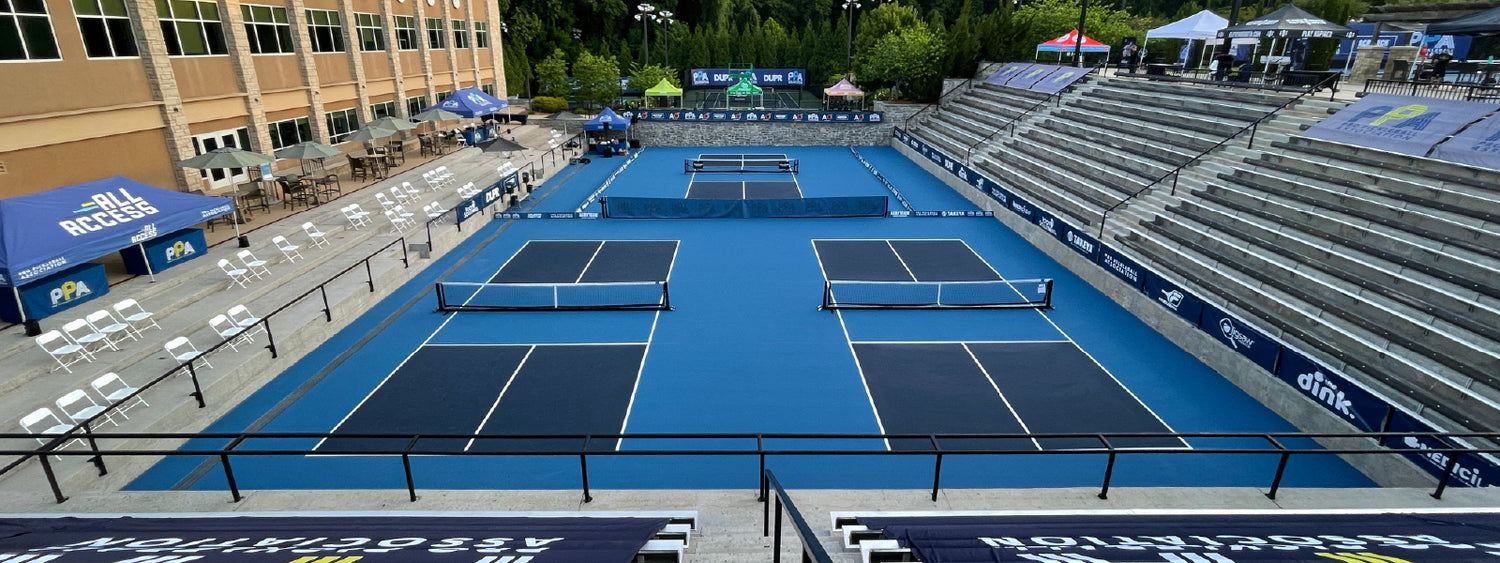Published June 20, 2024
Racket sports have always held a special place in the world of recreational activities, offering a blend of skill, strategy, and social interaction. Among the diverse array of sports like tennis, badminton, and squash, pickleball and padel have emerged as popular choices for enthusiasts seeking something new. While they may seem similar at first glance, pickleball and padel actually boast distinct characteristics that set them apart. Let’s delve into what makes each of these sports unique.
Pickleball: The American Favorite
Pickleball, often hailed as the fastest-growing sport in the United States, combines elements of tennis, badminton, and ping-pong. It is played on a court similar to a badminton court but with specific dimensions—20 feet wide and 44 feet long for doubles play. One of the defining features of pickleball is its paddle, which resembles a larger version of a ping-pong paddle but made from materials like wood, graphite, or composite. The ball used is a perforated plastic ball, offering a unique sound and bounce. Unlike other racket sports, pickleball has a distinctive scoring system where points can only be won by the serving team, adding an extra layer of strategy and excitement.
Padel: The European Sensation
Padel, on the other hand, traces its origins to Mexico but gained immense popularity in Spain before spreading across Europe and beyond. This sport is played on a court roughly twice the size of a pickleball court—20 meters in length and 10 meters in width—with walls enclosing the playing area, much like a mini tennis court surrounded by glass or mesh. Padel rackets are solid and perforated, more akin to a tennis racket but without strings, and players use a depressurized tennis ball that allows for longer rallies and controlled shots off the walls. Scoring in padel follows a format similar to tennis, with points progressing from 15 to 40 and the advantage rule applying.
Key Differences to Note
1. Court Design: Pickleball courts are open without walls, while padel courts have enclosed walls that players can use to rebound the ball strategically.
2. Racket and Ball: Pickleball uses a paddle and a plastic ball with holes, whereas padel employs a solid, perforated racket and a depressurized tennis ball.
3. Scoring System: Pickleball has a unique scoring system where only the serving team can score, while padel uses a traditional tennis-like scoring system.
4. Origin and Popularity: Pickleball originated in the United States and has gained a strong foothold in North America, whereas padel has its roots in Mexico and Spain but is increasingly popular in Europe and other regions.
Which One is Right for You?
Choosing between pickleball and padel ultimately boils down to personal preference and what aspects of a racket sport appeal to you the most. Pickleball offers a fast-paced, social experience with its unique scoring and paddle dynamics, making it accessible for players of all ages and skill levels. On the other hand, padel provides a strategic blend of tennis-like play with the added dimension of using walls to extend rallies and create unpredictable angles.
Whether you’re drawn to the quick reflexes and agility of pickleball or the tactical maneuvers and dynamic court play of padel, both sports promise hours of fun and camaraderie. As they continue to gain popularity worldwide, pickleball and padel are shaping the landscape of modern racket sports, inviting newcomers and seasoned athletes alike to pick up a paddle and experience the thrill of these unique games.
~
Looking for more insightful pickleball tips and strategies? Or perhaps the perfect pickleball gift?
Be sure to explore our other blog posts for everything from beginner's guides to advanced techniques. And don't forget to check out our top-rated pickleball gifts, perfect for players of all types, both on and off the court!



